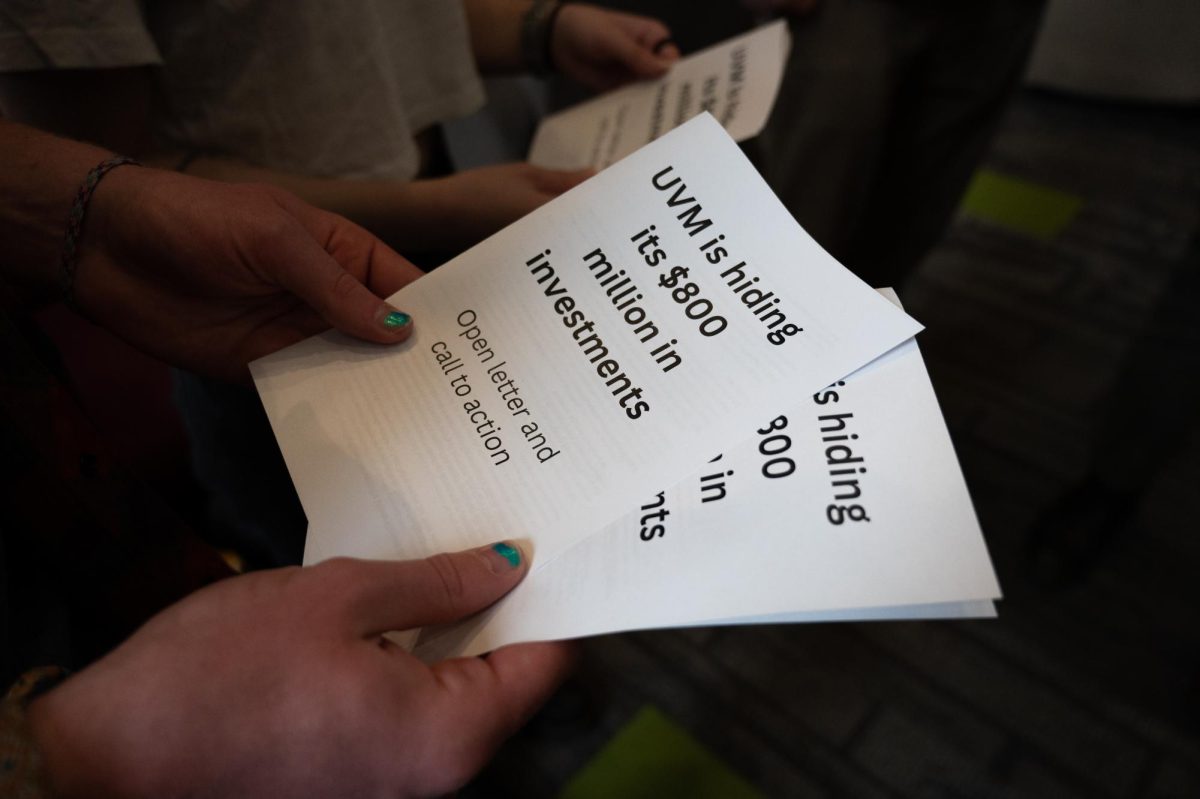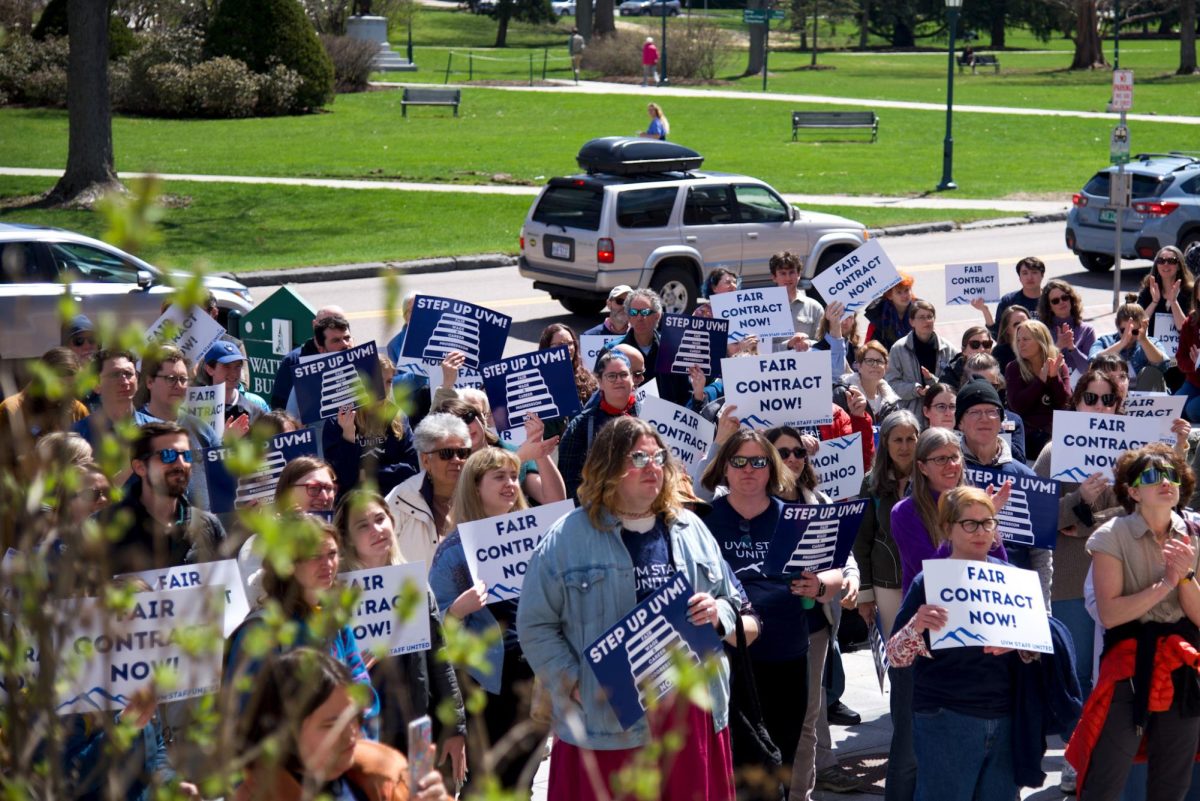The effects of cocaine on the individual, family and community life are incredibly consuming. Recently, Lambda Iota’s purported cocaine dealing has drawn this illicit drug into the spotlight on University of Vermont’s campus.Recently, an affadavit was issued to seize property of the the Lambda Iota fraternity, part of UVM’s Greek Life organization, because members of the fraternity were illegally distributing large amounts of cocaine.Despite this, cocaine remains one of the most difficult topics to broach for University students. The only people willing to talk about it demand the cover of anonymity.Views of just how rampant cocaine usage is on campus are incredibly varied. “It’s everywhere,” said one student, while another anonymous student declared that “it’s not that prevalent.”The only method of quantifying cocaine usage is to monitor legal proceedings. Since July 1, 2004 there have only been five cocaine-related arrests made at UVM, only three of which were University of Vermont affiliates, according to UVM Police Chief Gary Margolis.In the state of New York last year there were over 40,000 cocaine related arrests last year, according to http://www.Drug-Rehabs.org. According to the same source, there were only 250 arrests for cocaine in the state of Vermont. While this indicates that cocaine usage on UVM grounds and in the state of Vermont is relatively low, this does not eliminate it as a potential problem. The majority of the individuals arrested were between 26 and 30 years of age. This is a result of various factors, including students moving off campus and thus into a more experimental stage in their life, UVM Police Detective Brandon King said.Cocaine consumption in Burlington has increased in the past five years, Detective King said. He was unable to speculate as to why this may be the case, other than to imply that the demand has remained steady and it is only the supply that has increased.Cocaine is not used exclusively by people with large incomes. Crack, a derivative of cocaine, often contains only a small amount of cocaine in proportion to the amount normally snorted, and is highly addictive and significantly less expensive, according to http://www.psychiatrist.com.Crack is a huge problem in Chittenden County, Detective King said. While this problem may not extend directly onto UVM soil, the effects of this drug on the surrounding area are undeniably problematic.With an increase in use of crack and other forms of cocaine come higher crime rates. Crime increases because of the cost and addiction level of the drug. Chittenden County is the only High Intensity Drug Trafficking Area (HIDTA) in Vermont, Detective King said.Chittenden County contains I-89 and is near several other large highways: I-91, I-93 and I-87. These highways allow for quick transportation of drugs from major city hubs such as New York City, Springfield, Mass. and Providence, R.I., Chief Margolis said.These same roads also allow trafficking across the Canadian border at a point where there are no major cities, which is ideal for drug dealers, according to http://www.Drug-Rehabs.org.According to Detective King, cocaine on campus is incredibly hard to detect for police officers. The usage of cocaine does not produce a strong smell as other illicit drugs do and it does not require any paraphernalia.Cocaine, while not always seen, has an impact on collegiate life. One undergraduate student laments that “it’s taken many of my friends … all my musician friends … they just happen to abuse it the most.” “It’s not hard to find … but not in your face,” another student said. Burlington’s cocaine problem has not spread uniformly throughout the community. Detective King predicts that cocaine use will remain exclusive to areas with high population densities such as Burlington and will not have a trickle down effect on high school students.The numbers reassuringly reflect this prediction. Only 4.7 percent of the convictions regarding cocaine usage (including crack) were attributed to minors in the last year, according to http://www.Drug-Rehabs.org.Most high school students do not have unfettered access to the types of funds required to support a cocaine habit, Detective King said.While University of Vermont may have a zero tolerance policy for drug dealing on cam?pus (one strike and you’re out), they are much more sympathetic towards users, Detective King said.Students found guilty of possession will be referred to on-campus Alcohol and Drug Counseling. This service has full access to medical, psychiatric and / or outside treatment facilities, as well as to recovery and support groups, according to the Center for Health and Wellbeing Web site.While resolving drug dependency issues, offending students may be asked to take time off. Cocaine alone is not considered a zero tolerance drug, Detective King said.The recent allegations against Lambda Iota will have little effect on the broader drug scene in Vermont, but it may have a very strong effect on cocaine usage at UVM, Detective King said.Detective King predicts that students will realize the implications of becoming associated with a hard drug with harsh consequences. He hopes that students will realize that it is ultimately not worth the potential reprocussions.Aside from obvious legal concerns, health issues are another major factor that deter students from cocaine usage. One anonymous student claimed he uses it solely as a “party drug,” snorting only on “birthdays and New Years.” Unfortunately, many students subscribe to this flawed philosophy, according to http://www.Drug-Rehabs.org.Cocaine is an addictive drug, both psychologically and physiologically according to a study conducted in 2004 by N. Dimitrijevic, S. Dzitoyeva and H. Manev. Overdoses of this and other stimulants can cause heart attacks, respiratory failure, stroke and seizures. Sudden death, although rare, can occur.There have been no on-campus overdoses of cocaine in the past five years according to Detective King. However, this does not relinquish the possibility of this occurring. Those interested in helping someone with an addiction should contact UVM’s counseling services at (802) 656-0784 or head over to the Vermont Office of Alcohol and Drug Abuse Programs’ (ADAP) Web site, http://healthvermont.gov/adap/about.aspx. Cocaine is a helluva drug. As the University of Vermont population expands and continues to diversify, students and faculty must remain vigilant in their watch over their own community. Acting as a responsible team is the only way to perpetuate the ethical standard of the UVM campus.












